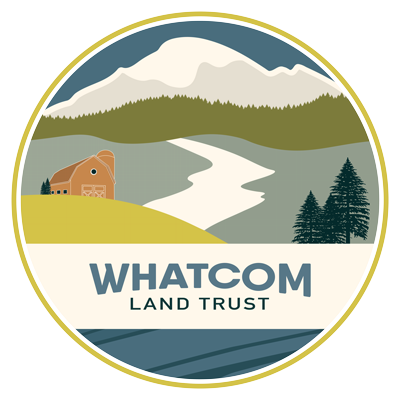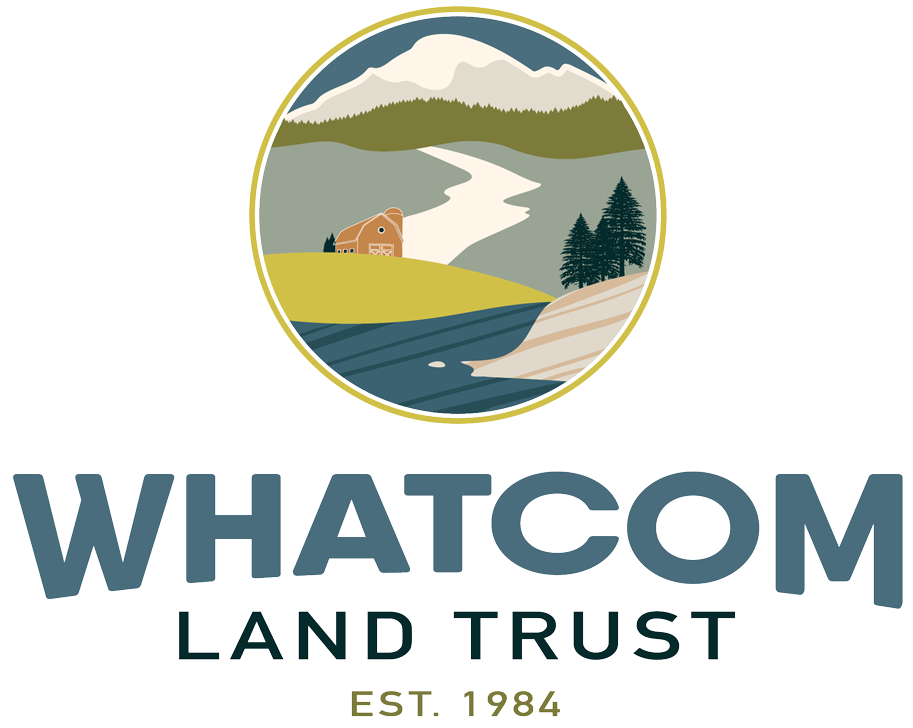Whatcom Land Trust’s community partnership with Explorations Academy
It’s a stormy December day at Whatcom Land Trust’s California Creek property. Fifteen middle and high school aged students, clad in rain gear, are planting saplings across an open field. Sounds of shovels are interspersed with laughter and shouts of “I’m the best blue-tuber!”. Wait- they said YouTuber, not blue-tuber, right?
This fall, Whatcom Land Trust partnered with Explorations Academy for a quarter-long stewardship education program. Students visited a Land Trust property weekly to learn basic stewardship skills through invasive species removal and tree planting.
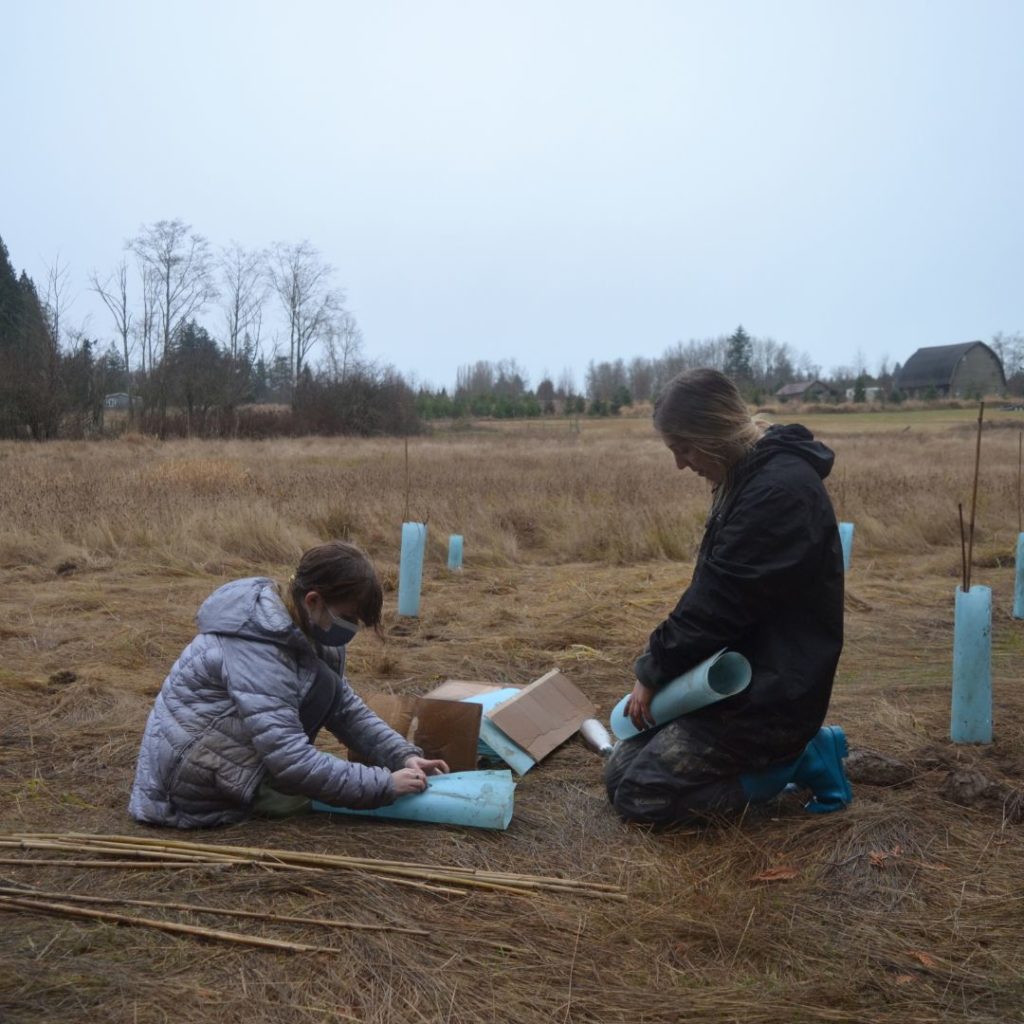
Today’s work party is the last of the fall and Whatcom Land Trust Volunteer Coordinator Madeline Mahler kneels next to a young student, who is holding a notorious blue tube.
“You take both sides, grab the middle arrow, fold it, pinch it. Now you have a structure to protect the baby plants. The tubes create a greenhouse effect so the plant can survive the winter. It also protects them from voles and other little animals that like to eat them.”
The student happily yells “It’s time to blue-tube!” and runs off towards her friends, who are putting the final touches on a newly planted cedar sapling. After a successful installation, she steps back and comments “This is where it’s going to be forever. This is where it’s going to grow up. It’s home now.”
Explorations Academy head of school Jennifer Dowd finds that learning on the land with community partners instills a sense of stewardship and care at a young age.
“Our curriculum is really based around a holistic development of young people. And so we’re looking at how they are developing as a person. How do they relate socially with each other through collaboration? How do they learn with each other? How do they see themselves as a part of the larger community?”
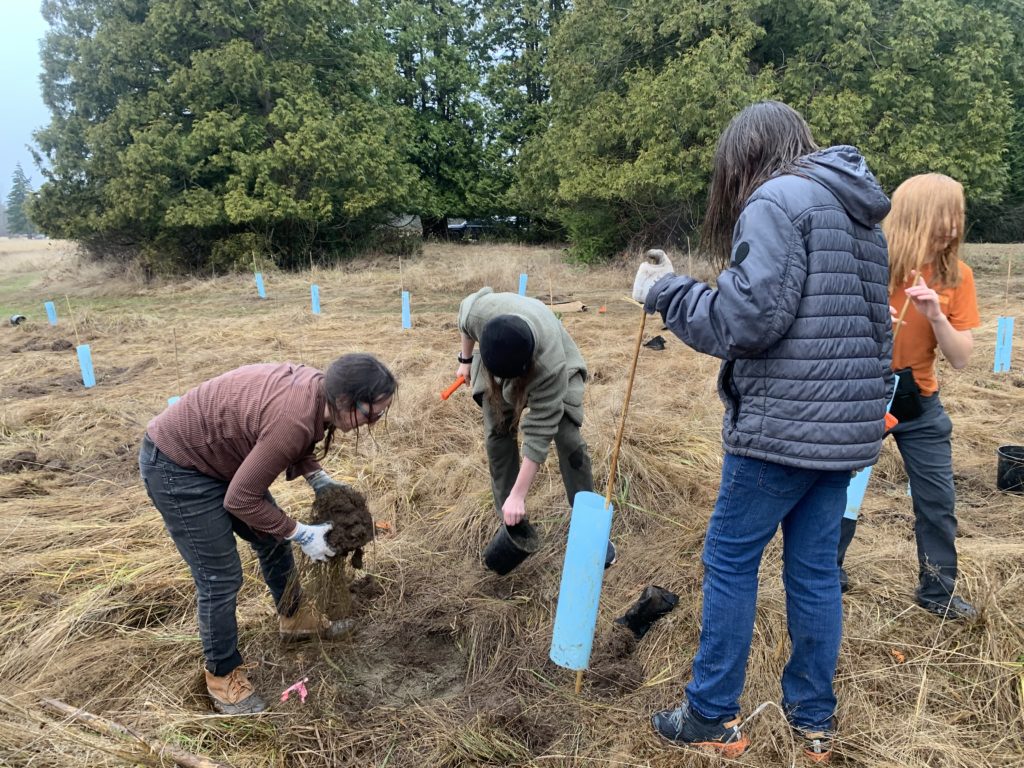
As the students continue digging and planting across the rainy field, I ask if they enjoyed their quarter of stewardship. Twelve-year-old Mason chimes while pounding a support stake into the ground, grinning each time the rubber mallet makes contact. “At first no, and now yes.”
High school student Cadynce said that once she became familiar with the environment and the work she started looking forward to the class. She added that most students didn’t know how to use a shovel at the beginning of the semester. Now, they all have favorite stewardship tools.
At this comment, a debate breaks out across the field about what makes the best shovel. Opinions range from the shape of the shovel head to the best handle for different digging techniques. It’s easy to tell their passion for stewardship tools rivals their passion for baby trees.
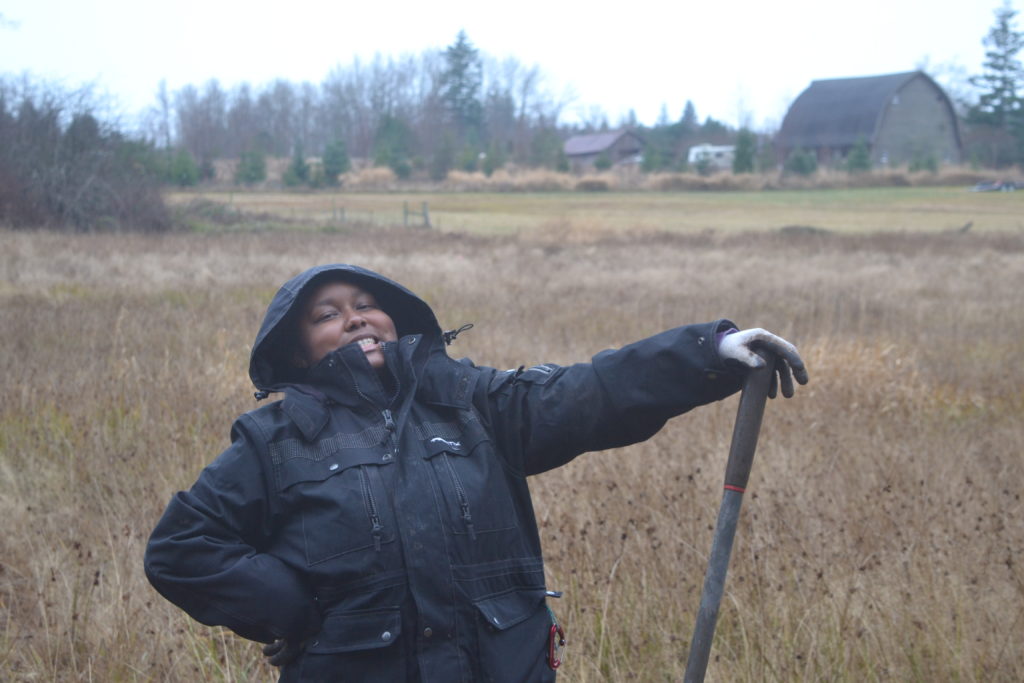
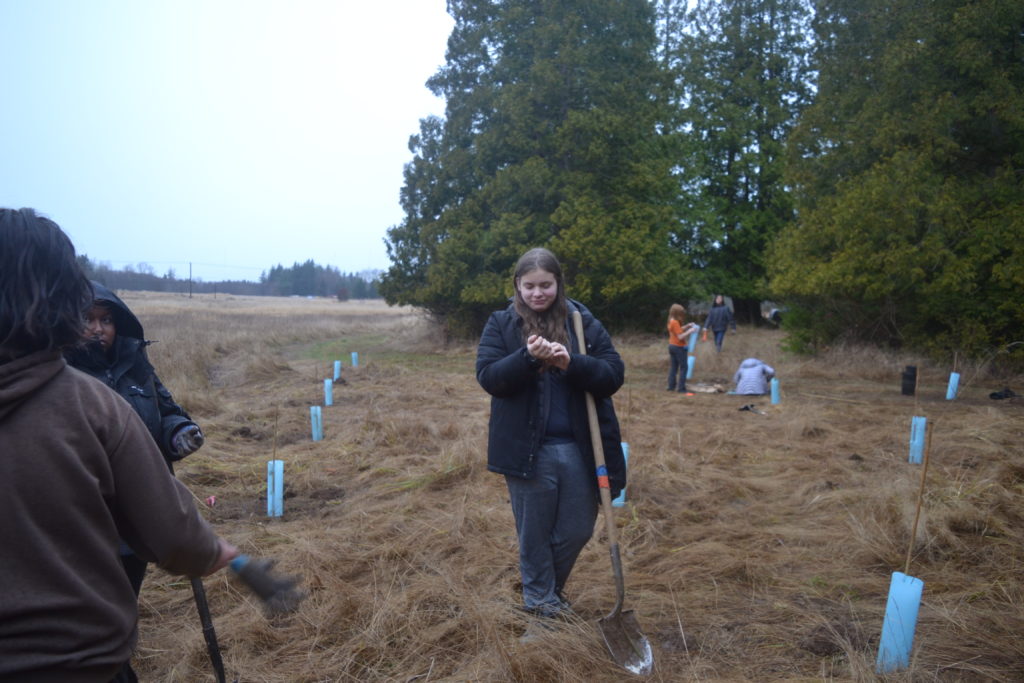
The students are quickly redirected to the task at hand by Marley, the Explorations Academy teacher leading this class.
“Even when there is griping about how hard the work is, we get back on the bus and everyone is in a good mood. It’s nice to do something with students that they enjoy, that’s functional, and that has an immediate tangible purpose out in the world,” Marley said.
As Marley looks out over the 50 newly planted trees, she adds, “It’s a nice sense of accomplishment.”
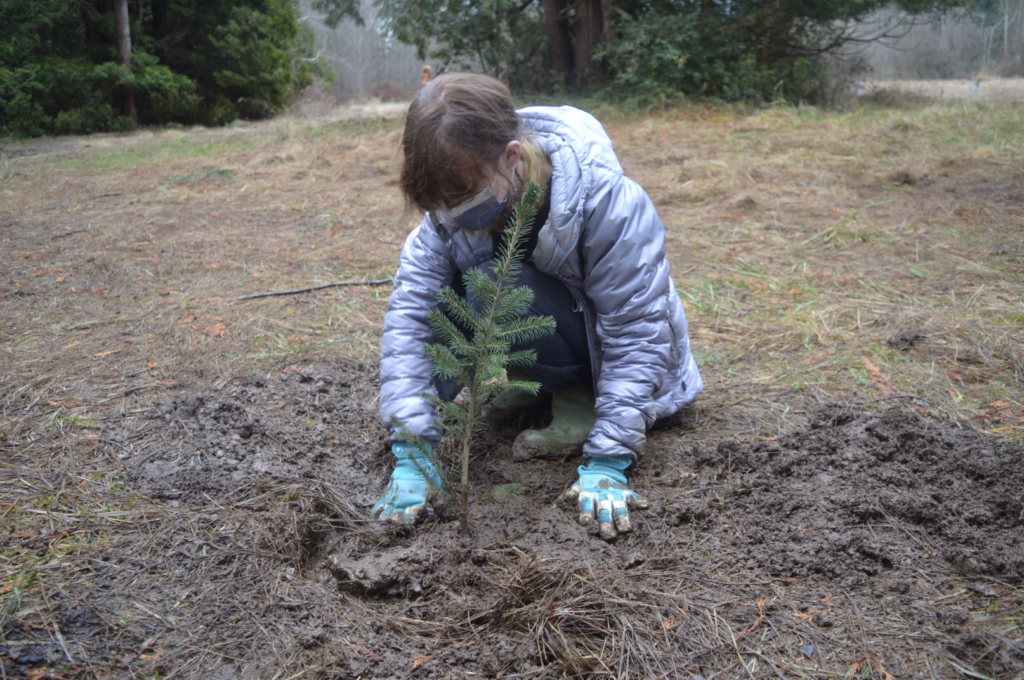
Dowd notes, “research shows when [children] have sustained engagement in nature with caring adults, they grow up to have environmental ethics. So whether or not they go into an environmental career, they extend their caring, thoughtfulness and consideration for how their actions impact the environment throughout their lives.”
At the far edge of the planting area, high school student Laith surveys a patch of Himalayan blackberries and shares his love for invasive removal.
Laith muses “It’s very cathartic. I don’t know if I have anything personally against the blackberries – they do taste good, but they take over. The cutting of blackberries feels like you’re making progress. You can see it while you work. It gives you a sense of reward, after an hour you can see you’ve got a few feet. It’s a qualitatively measurable impact.”
Laith turns to Madeline and says, “By the way, how long does it take for these to grow back?”
Madeline begins to laugh, “Umm… a year. But it makes a big difference. Otherwise, they take over and are unmanageable. And remember, we’re planting these trees so eventually the invasive blackberries will be shaded out. We just have to work to keep them at bay until the trees take over,” Madeline said.
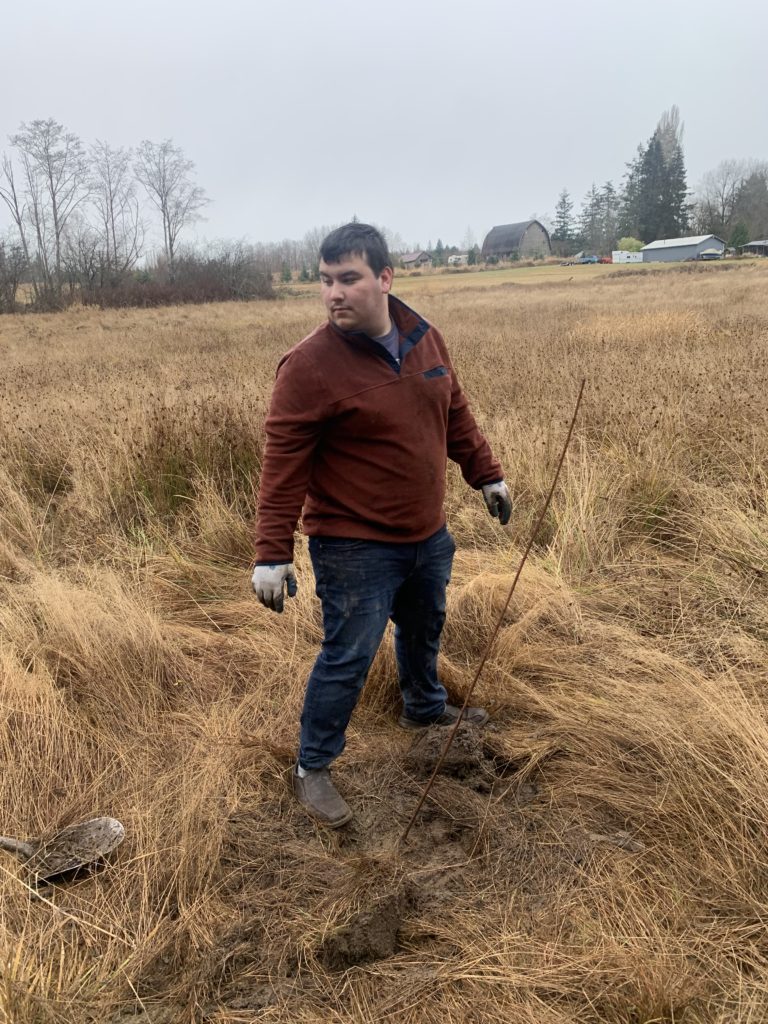
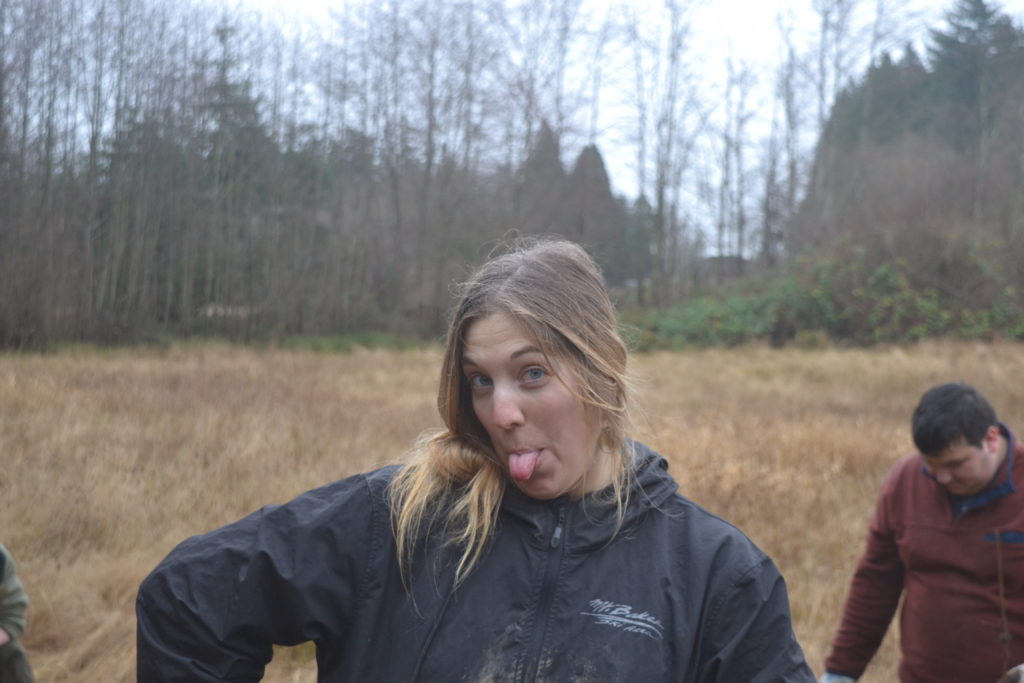
Laith adds, “Ok, so we’re stopping the positive feedback loop, that makes sense.”
“When you guys come back in 70 years, and you’re walking out here with a cane, you’ll see them and be so happy,” Madeline replied.
In total the students worked on two Whatcom Land Trust properties, California Creek and Ladies of the Lake. They removed 180 square feet of invasive blackberry and planted over 100 native trees. Madeleine noted that their planting projects were especially impressive as they had to dig through thick grass and old gravel driveways.
After the last tree is planted and tools are put away, Madeline surprises the students with hot chocolate and cookies served on the work truck tailgate. It’s hard to discern between streaks of dirt and smears of chocolate across faces and raincoats. Throughout the celebration students crane their necks towards the newly planted trees, checking on their hard work- a job well done by Whatcom County’s next generation of land stewards.
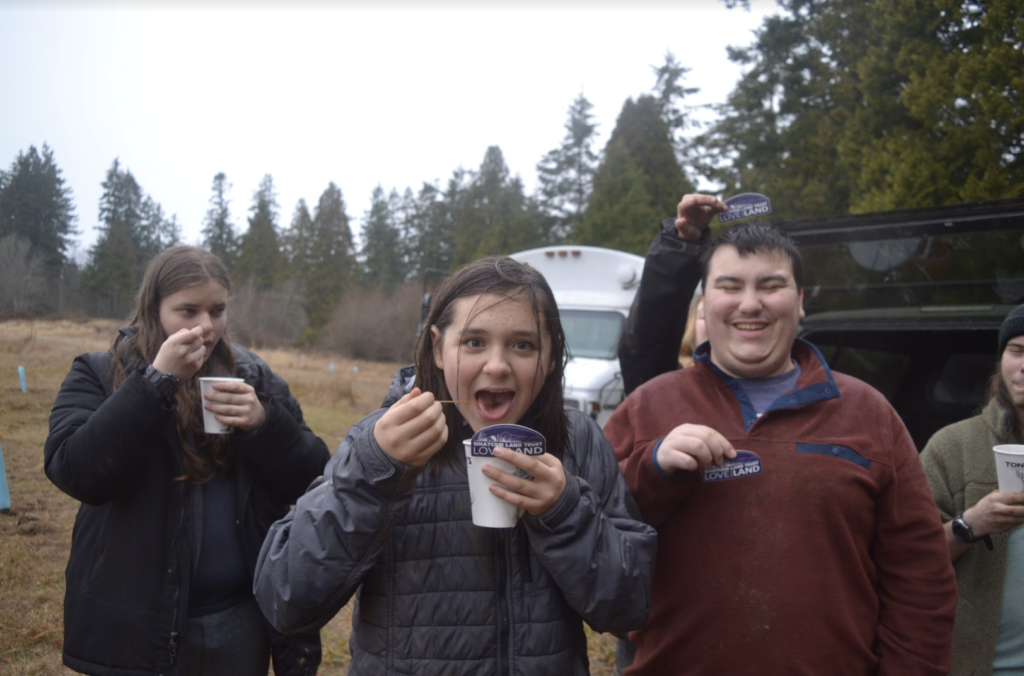
Support Whatcom Land Trust’s work to protect vulnerable lands forever for future generations.
